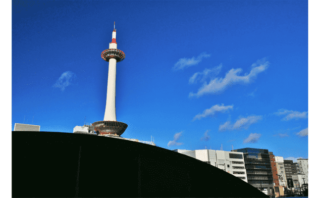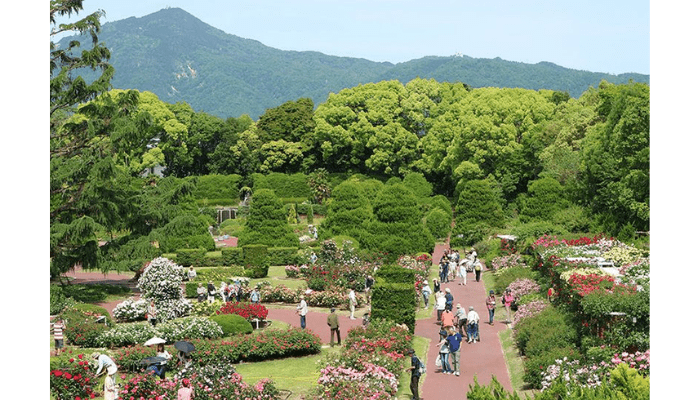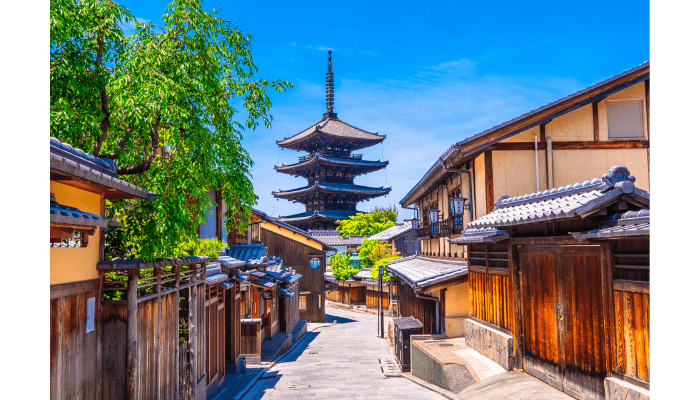Have you ever heard of the words “Goshuin,”Goshuin book (Goshuincho) “,” or “Goshuin Girl”?
A Goshuin is a special seal or stamp that you can receive when visiting temples and shrines in Japan. In recent years, more and more women have taken an interest in collecting these beautiful stamps, and they are often called “Goshuin Girls.”
I have been collecting Goshuin for about five years, traveling to various temples and shrines. As a passionate Goshuin Girl, I will introduce you to the world of Goshuin—what they are, how to receive them, proper etiquette, and some of the cutest original Goshuincho (Goshuin stamp books) from temples and shrines across Japan!
What is a Goshuin?
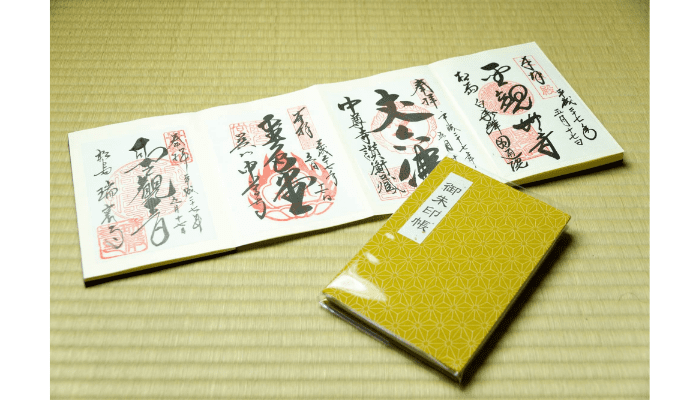
Goshuin has a long history, but today, it refers to a special stamp given at temples and shrines. It is handwritten by monks or shrine priests, who inscribe the name of the temple or shrine along with the date of your visit in calligraphy, then stamp it with a red seal.
Goshuin is given to visitors who have paid their respects, and it is considered a sacred representation of the temple’s main deity or the enshrined god.
Nowadays, you can receive a Goshuin at both temples and shrines. While its exact origins are unclear, one common theory is that it started during the period when Buddhism and Shintoism were closely connected. At that time, Goshuin was given to those who made a nokyo (sutra offering) at temples and shrines.
By the mid-Edo period (1603–1868) to the early Meiji period (1868–1912), people could receive a Goshuin by offering a monetary donation instead of writing sutras. Even today, some temples only grant Goshuin to those who make a sutra offering.
What is a Goshuincho?
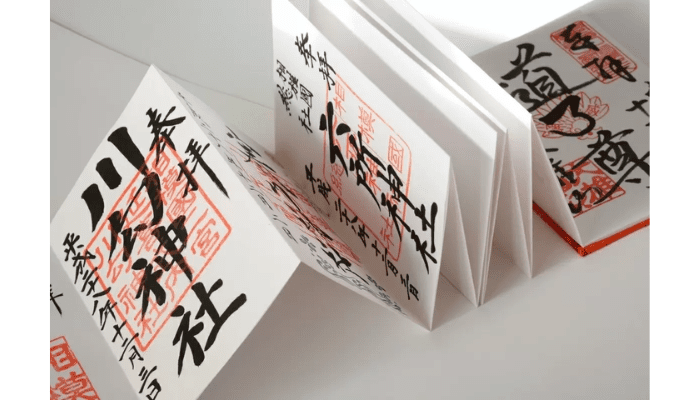
A Goshuincho (or Shuincho) is a special notebook used to collect Goshuin stamps from temples and shrines.
These books come in many varieties—you can find original versions sold at temples and shrines, as well as ones available at Buddhist supply stores, bookstores, and souvenir shops.
Temple and shrine-specific Goshuincho often feature designs inspired by the history or symbolism of the place, making them highly collectible.
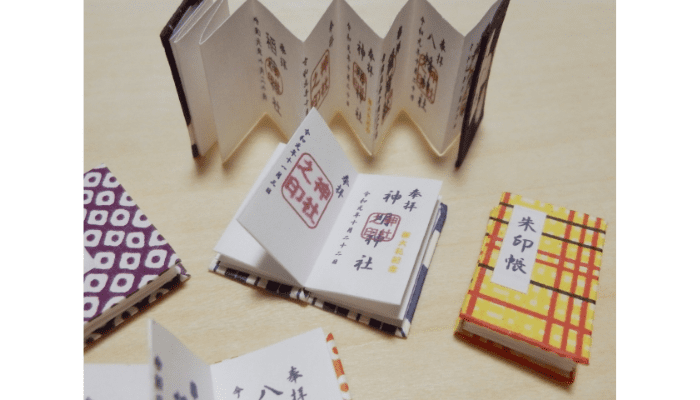
There are two main types of Goshuincho:
- Accordion-style (Oribon-shiki) – The most common type, with folded pages.
- Bound-book style (Tojibon-shiki) – A traditional book format.
The accordion-style Goshuincho is particularly popular. It is made using a double-layered folding technique that allows stamps to be placed on both sides of the pages.
My Personal Collection of Goshuincho
Here are some of the unique Goshuincho I have collected over the years:
Ise Jingu Limited-Edition Goshuincho
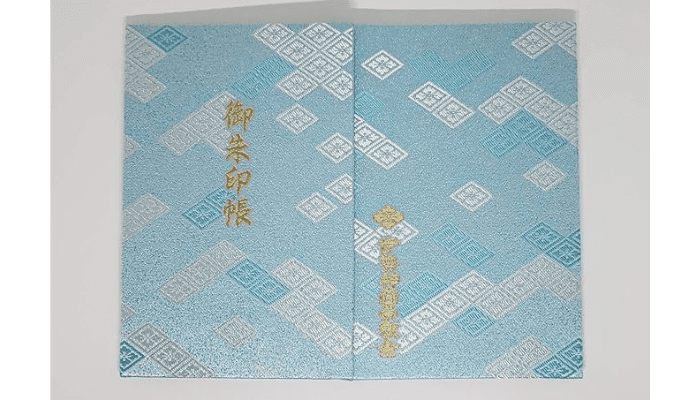
This special Goshuincho was released for the 62nd Shikinen Sengu, a sacred rebuilding ceremony held at Ise Jingu every 20 years.
It was the very first Goshuincho I owned. The moment I saw it, I knew I wanted to start collecting Goshuin with this book!
Zuishin-in Temple (Kyoto) – Ono no Komachi Goshuincho
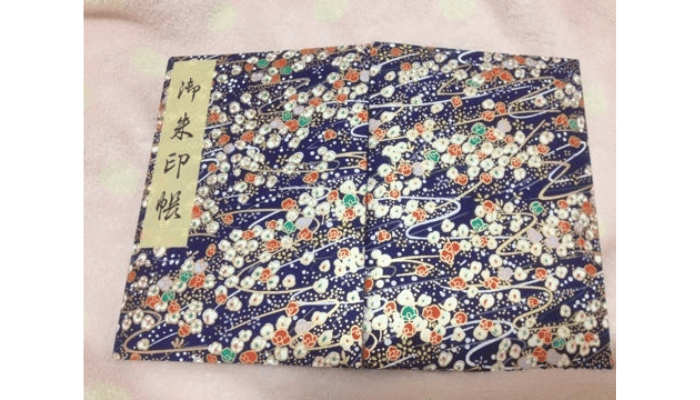
Zuishin-in Temple is associated with Ono no Komachi, a legendary Heian-period poet known for her beauty and talent.
Since it’s best to keep separate Goshuincho for temples and shrines (some places do not allow mixed books), this was my first temple-exclusive Goshuincho.
Inside the cover, there is a printed poem by Ono no Komachi, adding a poetic charm to the book.
Yaegaki Shrine (Shimane) – The Camellia-Themed Goshuincho
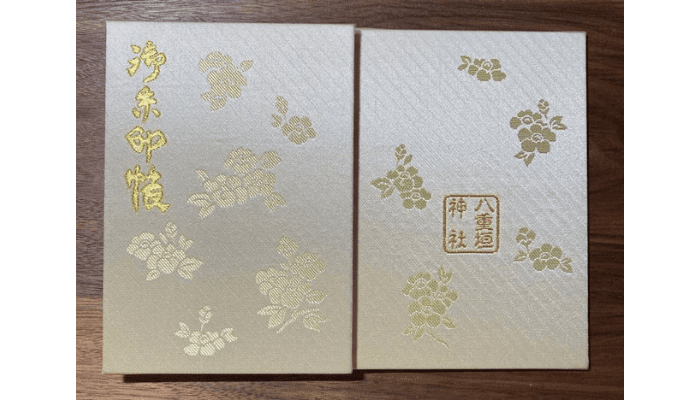
Yaegaki Shrine enshrines the married deities Susanoo-no-Mikoto and Kushinadahime, famous from the legend of Yamata-no-Orochi (a mythical serpent). The shrine is well known as a power spot for love and matchmaking.
The design of this Goshuincho is inspired by the “Meoto Tsubaki” (Married Camellia Trees) found in the shrine grounds.
It has a simple yet elegant style, making it a charming and lovely addition to my collection.
How to Receive a Goshuin
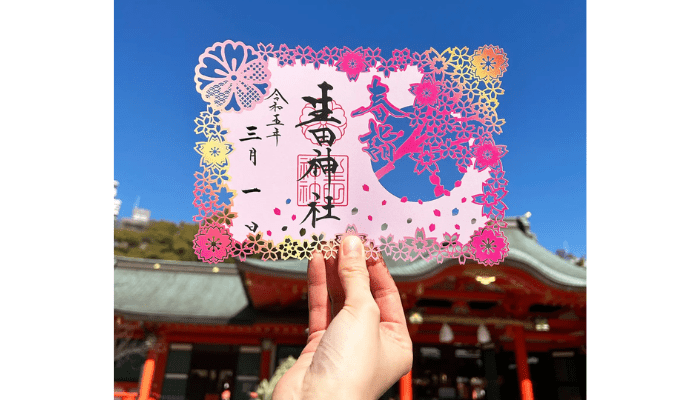
If it’s your first time collecting Goshuin, you might wonder where and when to receive one. Here’s a simple step-by-step guide to help you!
Steps to Receive a Goshuin
- Prepare a Goshuincho (If you don’t have one, you can usually buy one at the temple or shrine.)
- Visit the temple or shrine and offer your prayers first.
- After praying, go to the Goshuin reception area.
- This is usually the shrine office (shamusho), reception counter (juyosho), temple office (jimuso), or sutra hall (nokeijo).
- Some places have a separate counter specifically for Goshuin.
- Open your Goshuincho to a blank page and politely say,
- “Goshuin wo onegai shimasu” (meaning “May I receive a Goshuin?”)
- Then hand over your book.
- Offer the required fee (called Ofuse or Hatsuho-ryo).
- Receive your Goshuin, say thank you, and carefully take back your book.
Things to Keep in Mind
- The typical fee for a Goshuin is 300–500 yen, but some places do not display a fixed price.
- If no price is indicated or the staff says “Okimochi de…” (meaning “as you feel”), you can politely ask:
- “Oikura o osame sureba yoi desu ka?” (meaning “How much should I offer?”)
- Goshuin are not something you “buy.” They are a spiritual offering to honor your connection with the temple or shrine.
- If you are asked to offer an amount based on your feelings, 300 or 500 yen is a good reference.
By following these steps, you can respectfully receive a Goshuin while appreciating its spiritual significance!
Etiquette and Important Tips for Receiving a Goshuin
1. Prepare Small Change
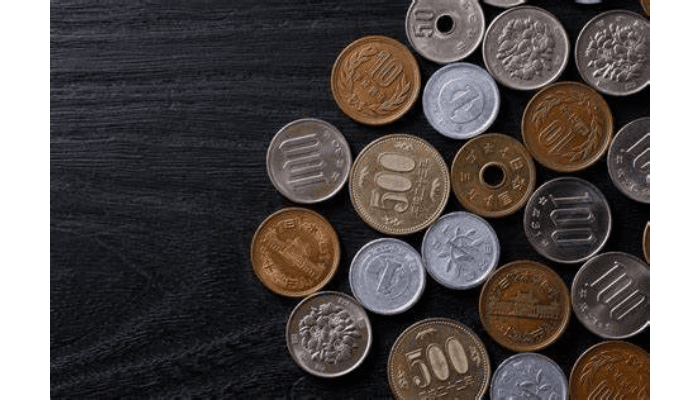
When visiting temples and shrines, it’s always a good idea to carry small change. You’ll often need coins for offerings (osaisen), fortune slips (omikuji), and other small payments.
For Goshuin, it’s considered polite to pay the exact amount without expecting change.
As mentioned before, Goshuin are not something you “buy” but something you offer a donation for as a sign of respect. Some well-known temples and shrines even post signs requesting visitors not to use 5,000 or 10,000 yen bills.
To avoid any trouble, consider keeping a small coin purse specifically for shrine and temple visits. Whenever you receive 100-yen coins in daily transactions, set them aside for your next visit!
2. Always Pray Before Receiving a Goshuin
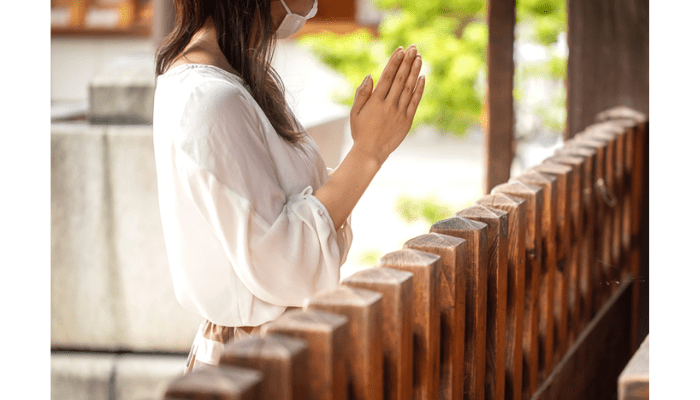
A Goshuin is a sign of your visit and a spiritual connection with the deity or Buddha of the shrine or temple. It is given as proof of your worship, so you should always pray before requesting a Goshuin.
Please do not collect Goshuin just for the sake of collecting them without offering a prayer. Some temples and shrines have stopped issuing Goshuin because too many visitors were only collecting stamps and leaving without showing proper respect.
Always remember the true meaning of Goshuin and follow proper etiquette while enjoying your Goshuin journey.
That said, at popular temples and shrines—especially during crowded seasons like autumn leaves season or New Year’s visits (Hatsumode)—you may be asked to submit your Goshuincho (stamp book) before praying.
In such cases, follow the temple or shrine’s instructions, leave your Goshuincho at the designated counter, take a numbered ticket, complete your prayer, and then return to pick it up.
3. Do Not Request a Specific Style for Your Goshuin
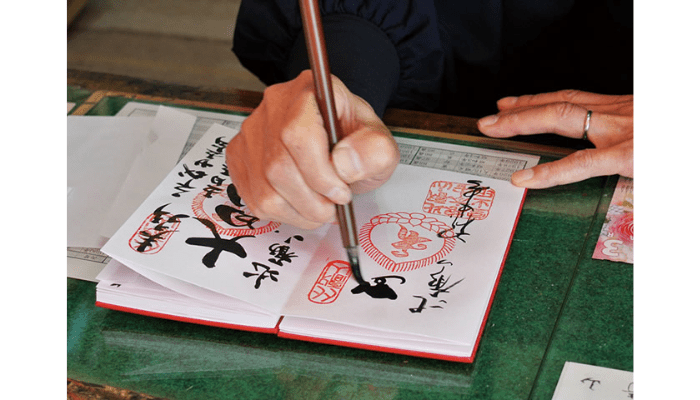
Goshuin are handwritten by temple and shrine staff, meaning each one is unique. The writing style may vary depending on the person who prepares it.
Never ask them to write it in a specific way, such as copying an example you saw on social media. Each Goshuin is a one-of-a-kind piece, written with care. Instead of making requests, enjoy the anticipation of receiving a unique Goshuin created just for you.
4. Do Not Sell or Buy Goshuin
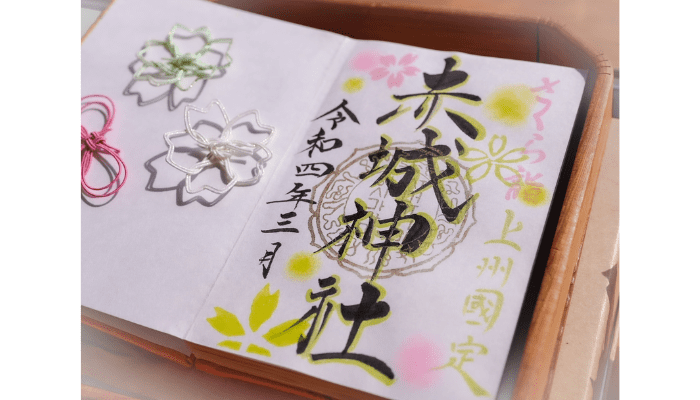
Some temples and shrines offer limited-time Goshuin for special events or seasons. Because these special Goshuin are highly sought after, some people try to resell them online through auction sites.
However, it’s important to understand the true meaning of Goshuin. A Goshuin is not something you “buy” with money—it is given as a symbol of your visit and spiritual connection with the temple’s deity or Buddha.
Both selling and purchasing resold Goshuin go against proper etiquette. In fact, some temples and shrines have stopped issuing Goshuin entirely due to these issues.
To help preserve this tradition, please respect the purpose of Goshuin and avoid any involvement in reselling.
What to Do If You Forget Your Goshuin Book
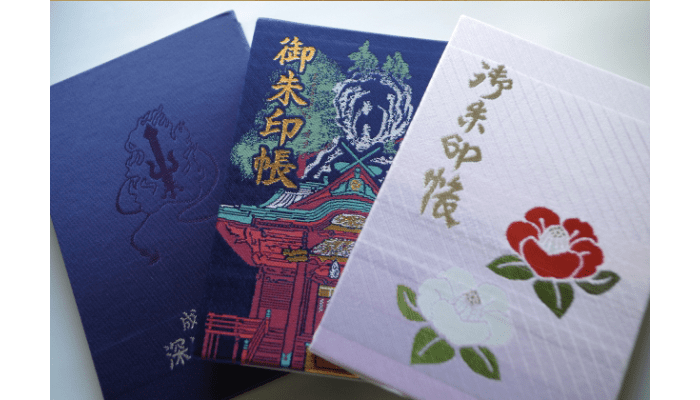
Sometimes, you might forget to bring your goshuin book or unexpectedly visit a temple or shrine without it. If that happens, don’t worry!
You can still receive a goshuin even if you don’t have your book with you. Most temples and shrines offer goshuin on a special sheet of paper (called shikishi or shuin-shi). Simply let the staff know that you forgot your book, and they will provide you with a goshuin on paper.
Once you return home, you can paste the paper into your goshuin book or store it in a folder for safekeeping. Some temples and shrines also prepare pre-written goshuin on paper instead of writing them on the spot. If you receive one of these, you can keep and store it in the same way.
Introducing Cute Goshuin Books
Many temples and shrines offer their own original goshuin books, featuring unique and beautiful designs. Here are some adorable options that you’ll definitely want to add to your collection when you visit these sacred sites!
Tokyo: Shibuya Hikawa Shrine
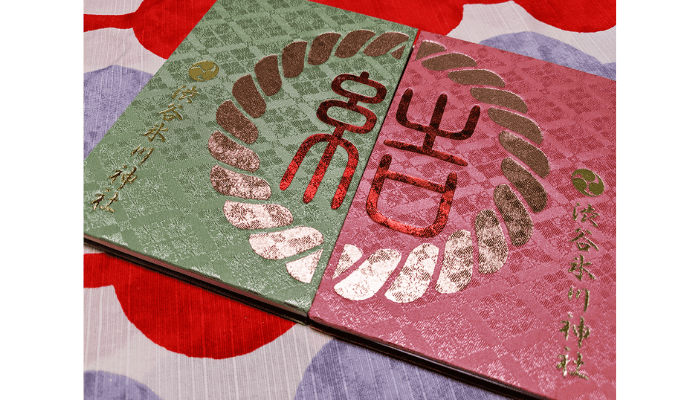
Shibuya Hikawa Shrine offers goshuin books in two colors: pink and green. When placed side by side, the covers form the kanji “結” (yui), meaning “connection” or “bond.” Even when opened individually, the character is still visible. These books are perfect for couples or married pairs who want to share a matching set!
Tokyo: Koyasu Shrine
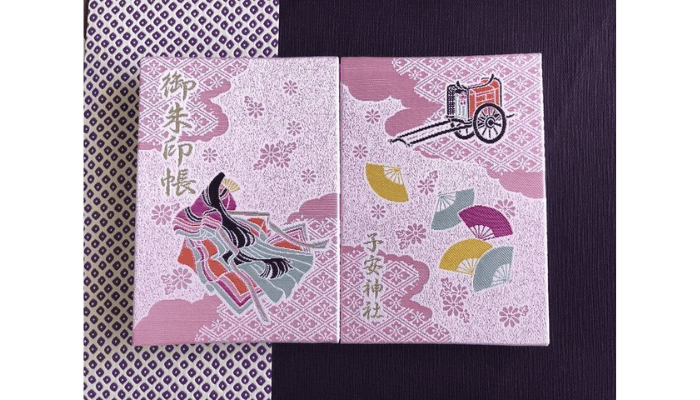
This goshuin book features a soft pink cover with a beautiful illustration of a noblewoman in junihitoe, a traditional multi-layered kimono. Koyasu Shrine also offers four different types of goshuin, including special ones with classical Japanese poetry.
Chiba: Chiba Shrine
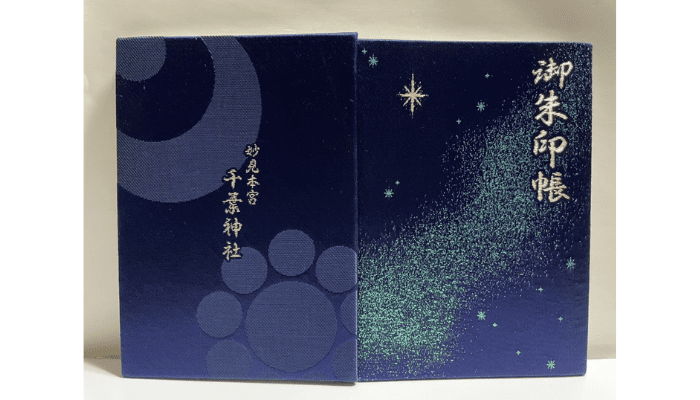
Chiba Shrine’s goshuin book has a stunning design of a sparkling Milky Way on a vivid blue background. While it leans more toward an elegant style than a “cute” one, it’s a fantastic choice for those who love blue tones and celestial motifs.
Aichi: Ichihara Inari Shrine
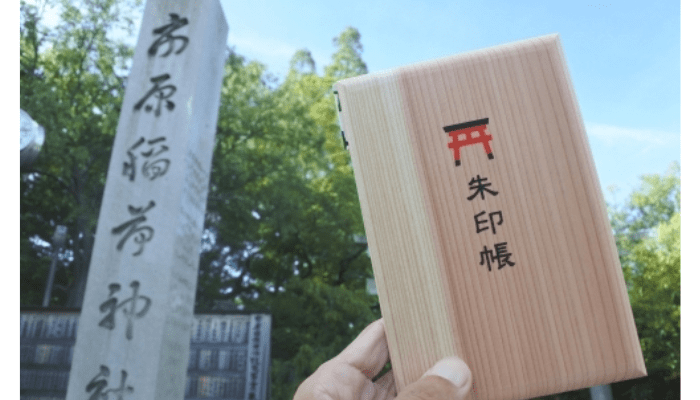
This shrine in Aichi Prefecture offers a truly unique goshuin book with a wooden cover. The natural texture of the wood, combined with the carefully designed torii gate and calligraphy, gives it a charming and warm feel.
Kyoto: Ichihime Shrine
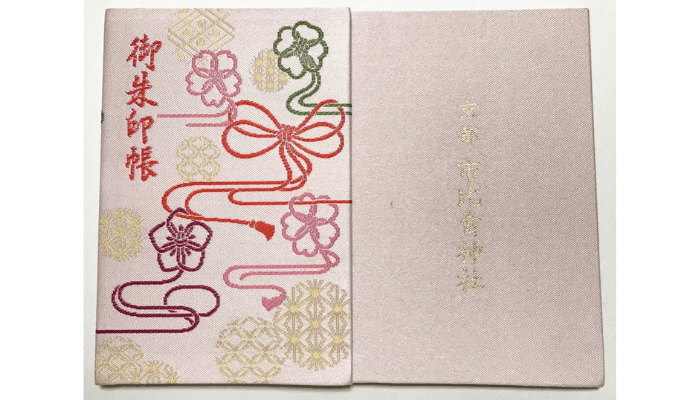
Ichihime Shrine’s goshuin book features a soft pastel pink cover adorned with kumihimo (traditional Japanese braided cords). The colorful braids and flowing design create a cute and elegant look, making it a lovely addition to any goshuin collection.
Each of these goshuin books has its own special charm, making them wonderful souvenirs from your shrine visits!
In this article, we’ve introduced the meaning of goshuin, goshuin books, and the proper etiquette for receiving them. While it’s important to understand their significance and follow proper manners, collecting goshuin is actually a hobby that anyone can start easily.
If you enjoy visiting temples and shrines or love traveling, goshuin collecting is a great activity to try. For avid travelers, it can be a meaningful way to begin your journey—by paying respects to the local deity and receiving a goshuin before exploring the area.
If you’re thinking about starting this hobby, remember to collect each goshuin with gratitude and appreciation. Over time, your goshuin book will become a unique and personal record of your travels and spiritual experiences!
▼ Related Articles for Kyoto Sightseeing

